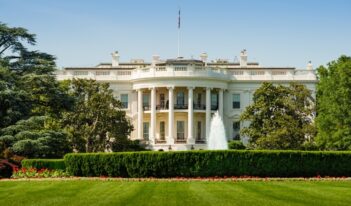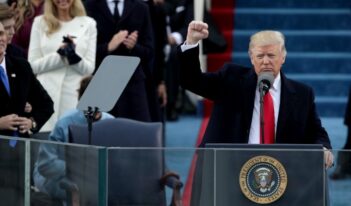
Comparative study suggests deregulatory policy is stronger as a political symbol than an economic stimulus.
On the campaign trail, Donald Trump grabbed headlines with pledges to “take care of regulations,” slashing costly rules that burden American businesses. As President, Trump took the first step toward delivering on his campaign promises by issuing an executive order that directed agencies to eliminate two existing federal regulations for every new regulation issued.
The formulaic nature of President Trump’s “one-in-two-out” order has sparked debate among experts about the directive’s constitutionality and practicality, and it has even led to legal action. For all the controversy of Executive Order 13,771, though, the United States was not the first country to require that governmental agencies remove regulations before adding new ones. According to two policy scholars, an international comparison underscores the ambitious scope, persistent ambiguities, and political motivations of President Trump’s regulatory reform order.
In their paper, Oxford University’s Robert Hahn and the Center for European Studies’ Andrea Renda find that at least seven other countries have implemented similar regulatory schemes. Hahn and Renda conclude that these “one-in-N-out” policies, where “N” stands for the number of eliminated regulations, have not substantially increased economic efficiency, or total net economic benefits. More than anything else, they write, this approach to reforming regulation instead serves “as a potent political symbol, even if it may be devoid of precise economic content.”
Australia, Canada, France, Germany, Netherlands, Portugal, and the United Kingdom have also undertaken one-in-N-out policies.
Hahn and Renda note two common themes among these regulatory regimes. First, unlike the United States, most of the countries require that agencies eliminate only one rule for every new rule issued. Second, each of these programs entails some measure of regulatory costs. This requirement means that, despite the simplicity of the one-in-N-out logic, the cost of new regulations still cannot exceed the cost of the cut regulations.
The programs, however, diverge in how regulatory costs are calculated and in which regulations are exempt from the requirement. Hahn and Renda argue that these differences can lead to widely varying results and provide a glimpse of the one-in-two-out order’s potential impacts and limits.
Due to the difficulty of quantifying regulatory burdens, Hahn and Renda state that most countries define costs narrowly, often limiting them to administrative burden or paperwork costs. These calculations do not capture the full economic burden of a regulation since they exclude implementation and enforcement costs, along with what economists call “opportunity costs”—the forgone benefits of the next best use of the regulated resource.
Uncertainty remains about how U.S. agencies will incorporate Executive Order 13,771 into the regulatory review process. However, Hahn and Renda note that the directive defines regulatory costs more broadly, in accordance with Office of Management and Budget guidance, to include all opportunity costs to society.
This more holistic approach could carry a thicket of analytical challenges that, according to Hahn and Renda, the Trump Administration has not yet resolved. The method would require calculating the marginal costs of both new and existing regulations—a resource-intensive task, since the current stock of regulations numbers in the thousands. Moreover, the calculations would need frequent updates because incremental costs often change over time.
Hahn and Renda contend that the scope of President Trump’s order is also broader than similar programs abroad and has fewer rules carved out from its requirements. According to a guidance memo released in February 2017, the directive applies only to “significant” regulatory actions. These are regulations with an annual economic impact exceeding $100 million, create inconsistencies with existing regulations, materially alter agency budgets, or raise “novel legal or policy issues.” Among these regulations, the executive order exempts only rules issued by independent agencies, the military, and regulations relating to national security and banking—a decision that leaves many spheres of regulation on the table.
In contrast, Hahn and Renda point to the United Kingdom, whose one-in-three-out policy excludes taxes, self-regulation, and European Union (EU) regulations—a collection of rules that together accounts for €8.3 billion, or $9.9 billion in regulatory costs.
Despite the difficulty of comparing savings across different regulatory regimes, the wide range of results provides a sense of the potential impacts of the one-in-N-out approach.
At the high end, Hahn and Renda find that Australia saved $4 billion in regulatory costs between 2013 and 2015 for an average of slightly more than $1 billion per year. Meanwhile, Canada saved only $21 million between 2013 and 2014 for an average of approximately $10.5 million per year. Savings in the United Kingdom, Germany, and the Netherlands have ranged widely from just €500 million ($5.9 million) to up to €1 billion ($1.2 billion).
Most of these savings, however, came from removing only a few rules. For instance, 97 percent of Australia’s cost reduction came from only 23.9 percent of the rule rescissions. Similarly, in Canada, 30 percent of the rule changes drove 94 percent of the total cost savings. Hahn and Renda note, though, that it is unclear whether most of the high-cost rules in these countries have already been removed, making the potential for future cost reduction uncertain.
So, what is the best way to understand one-in-N-out policies if the economic data are mixed?
Hahn and Renda conclude that the policy is, above all else, a powerful political symbol, and can encapsulate limited government in a way that registers with the average voter. As support for this argument, they find that eight of the nine countries that have implemented a one-in-N-out policy were controlled by conservative or moderate political parties that favored smaller government.
Hahn and Renda further contend that the symbolism of such a policy might also help shape the institutional culture of federal agencies by signaling an administration’s priorities to bureaucrats.
Ultimately, how executive agencies interpret President Trump’s order will determine its overall economic effect. But if the overseas case studies are any indication, the one-in-two-out policy may carry a larger political and symbolic impact than an economic one.



